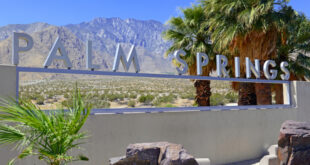The report, two years in the making, also found some problems, starting with crime, homelessness, and too much traffic. Most of those surveyed called the High Desert a good place to live, but they also identified much room for improvement.
Two years ago, when Joseph Brady proposed conducting a detailed analysis of the issues facing the High Desert, he was told not to expect much if he decided to pursue his idea.
Brady, president of The Bradco Cos. in Victorville, wanted to ask residents what they believed were the most important issues and problems facing the region, and what its elected officials should do to fix them.
In short, Brady wanted to find out if High Desert residents believed the region was a good place to live.
Brady said conducting such a survey first came to him about five years ago, but he wasn’t sure it could be done.
“I went to some people at Cal State San Bernardino, and they weren’t too enthusiastic,” said Brady, whose business is the region’s largest commercial real estate brokerage. “They said we’d be lucky to get 2,000 people to respond.”
Brady went ahead anyway, and Cal State San Bernardino – which helped conduct the survey – turned out to be a little off in its forecast. More than 13,000 people responded, enough to get an accurate assessment of the region, which has a population of more than 424,000.
“I really believe that might be the biggest takeaway from the study, even more than any issue it uncovered,” said Brady, a High Desert resident since the mid-1980s and one of the region’s most visible businessmen. “That level of response shows you that the people up here feel strongly about their community.”
On a livestream held Oct. 4, Brady unveiled Keys to a Better Tomorrow: The High Desert Survey, a detailed study that addresses a multitude of topics including crime, homelessness, medical service, law enforcement, and whether the High Desert provides enough high-quality entertainment.
He was accompanied onscreen by the report’s two authors, longtime Inland Empire economist John Husing and Barbara Sirotnik, director of the Institute of Applied Research & Policy Analysis at Cal State San Bernardino.
All three spent three months in 2019 developing questionnaires and setting up a website.
The report was put together from Aug. 1 to Sept. 15 of last year, with most respondents residents of Apple Valley, Victorville, Hesperia, Adelanto, Barstow, and Spring Valley Lake. Other respondents came from smaller cities and census-designated areas.
About 2,500 respondents gave their name or their email address so they could help find and implement possible solutions.
Originally, the report’s findings were to be released in May, but COVID-19 prevented that from happening.
The survey yielded the kind of information the High Desert’s public and private sector can learn from and use to make changes, according to Brady.
“Most of the people who responded challenged the status quo, which is what we were looking for,” Brady said. “Remember we did this when the economy was doing very well. It was way before COVID-19 started.”
The report’s initial finding is positive. Fifty-five percent of those surveyed called the High Desert a “very good” or “fairly good” place to live. One respondent praised the region’s “clean air and open space,” while another said people “look out for one another” and called the High Desert “a great place to live and raise our kids.”
It’s when the survey delves into specific issues that cracks begin to show. A typical comment is “I love the High Desert but….” according to one slide in Sirotnik’s PowerPoint presentation.
Many of the respondents said they’re concerned about crime, homelessness, and sanitation. Seventy percent said they worry about being the victim of a serious crime, and 26 percent said they believe the High Desert needs more law enforcement officers to improve response times.
Eleven percent believe crime has “increased and is out of control,” 11 percent said homelessness and people panhandling are significant issues and six percent called drugs and gangs “serious problems.”
Like any region in Southern California, High Desert residents complained about traffic: 56 percent of those surveyed said driving Cajon Pass is stressful, only 22 percent rated the region’s transportation excellent or good, and just 16 percent called High Desert roads as good as they could be.
Homelessness and crime probably elicited the strongest responses, Sirotnik said.
“I don’t think there was a lack of empathy, but a lot of people said they’re afraid of being hurt by a homeless person,” Sirotnik said. “People were very serious about that, and I think that’s a red flag to every elected official in the High Desert. They’d better do something about homelessness.”
Husing, who suggested more home ownership would help remove blight in the High Desert, said the region should form its own economic partnership – like the Inland Empire Economic Partnership – that would try to attract businesses to the High Desert.
Having spent more than two years putting the survey together, Brady – who is already leading a campaign to rebrand “High Desert” to “Mojave River Valley” – now must try to persuade elected officials and the private sector to implement the survey’s recommendations.
“It’s true that a lot of studies like this end up the shelf without ever being used, but we can’t let that happen here,” Brady said. “We have to go to the media and keep this thing alive. We can’t let what happened to San Bernardino and Pomona happen to the High Desert.”
 IE Business Daily Business news for the Inland Empire.
IE Business Daily Business news for the Inland Empire.


